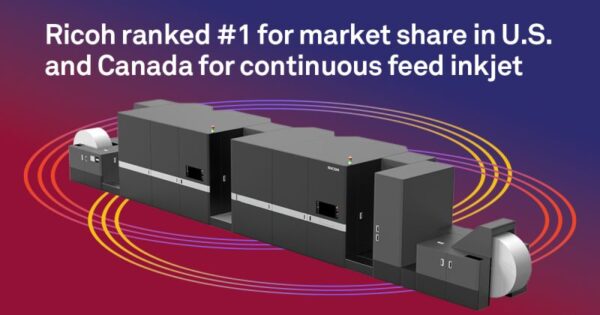Dealers share lessons learned from their diversification mistakes.
“Just because things hadn’t gone the way I had planned didn’t necessarily mean they had gone wrong.” Novelist and essayist Ann Patchett from What Now?, her Sarah Lawrence commencement address.
Everybody loves to talk about the joys of diversification, but not everybody wants to talk about the pitfalls. However, mistakes can be a valuable learning experience.
One of my favorite diversification-gone-wrong stories comes from Jason Habbal, vice president and sales manager with Vision Office Systems in Charlotte, North Carolina. Vision took a stab at selling 3D printers a few years back only to discover the reality did not match the hype. As Habbal told me when I interviewed him for a CR-CONNECT Dealer Tour story in 2020, that was a $150,000 mistake.
It was an exciting technology, and as Habbal described it, “We thought it was going to be cool, going to be fun, and we were going to sell high-dollar units. We really thought we could pick it up and run with it.”
It didn’t help that the market wasn’t quite ready for 3D at the time or that Vision wasn’t fully aware of the commitment required to sell the technology. “We did not hire specialized salespeople, we tried to push it through the copier reps and have them prospect for 3D,” acknowledged Habbal. “We looked at it like a regular office printer and found out quickly that was not the case. It was a very expensive mistake.”
There weren’t any dealers in Charlotte selling 3D at the time, which Habbal viewed as an advantage. He didn’t account for the power the few national players in 3D had that he was competinging against. When opportunities did arise, Vision was undersold by the national competition. “We would go into these meetings with these big companies and think they’re going to buy two or three,” he said. “Then, they come back and say, ‘We talked to such and such other brand, they have the same specs, but they cost 30% less.’ We fought it and fought it. We then hired somebody who knew the industry, sold a few small ones to some schools, but ended up donating our bigger machines to the engineering school at University of North Carolina at Charlotte. We couldn’t get out of that business fast enough.”
The lessons learned from that experience have been applied to other diversification opportunities. “The biggest lesson we learned with 3D printers is that we can’t throw money at it and hope it works,” acknowledged Habbal. “We don’t want to get too excited about it, and we try to see if it’s something we can manage and something all our salespeople can sell. We have to take our emotions out of it and make a good business decision and see if it is something that will be a viable option for us.”
That was the strategy used when adding interactive displays and video walls. “Not all our reps have bought into it, but the ones that have are seeing more activity,” said Habbal. “It has worked out well without too much pushback from our technical people and our salespeople.”
Vision partners with Clear Touch, a manufacturer of video walls based in Greenville, South Carolina. Clear Touch provides the installation services. “Ultimately, it’s our job to find the client,” said Habbal. “We don’t need an installation team which takes a lot of the issues we might have out of it.”
Vision is considering telephone systems and unified communications but isn’t ready to take the plunge just yet. “I think we could do it, but how much are we going to sell and is it something the salespeople can sell on their own?” questioned Habbal.
Still, he is intrigued by phone systems and could end up partnering with a cloud communication company such as Intermedia that provides unified communication solutions. Habbal said, “I’m all about residuals. If we can partner with somebody, and we find the customer, and they do most of the work, and we get paid a little bit each month, I’m okay with that until we get something built up.”
Chip Miceli, president of Pulse Technology in Des Plaines, Illinois, is an admitted risk taker and doesn’t shy away from sharing the ups and even the downs his dealership has experienced over the years. He shared a diversification effort-gone-wrong story that many dealers can identify with. Miceli said, “The biggest mistake I ever made was I bought a product that didn’t go over well, took forever to sell, and I had to sell below cost to get rid of it.”
That was an 80-ppm light production machine made by Toshiba and relabeled by Sharp. The problem wasn’t the product itself but Miceli’s sales team. “They wouldn’t sell it, it was above their pay grade,” he lamented. “I bought like 30 of them, thinking it was going to be a hot commodity, but my team was not good enough to sell it.”
Now, whenever he adds a new product to the mix, he speaks to his sales reps in advance, then makes the decision with their input, even if that didn’t always happen during the pandemic as when he purchased N95 masks and rapid COVID tests (See our “Healthy Choices” article in this isssue for more details about that endeavor).
One area of diversification that hasn’t gone wrong was video walls made out of display boards, which have since evolved into LED video walls. Initially, selling video walls was a challenge for his team, but Miceli encouraged them to find the opportunities, then he would follow up and close the deal. He told me, “The first [LED wall] we sold, they brought me in to talk about a projector, and I told them that won’t work in this facility, let’s go with an LED wall, and we put in a 12 x 20-foot LED wall. This was a $300,000 opportunity. Once the salespeople see you can get an opportunity like that, they start finding them, and they call me, and we get it done.”
Schools are a great market for LED video walls and LED scoreboards. The LED walls have proven to be a great upgrade over traditional display board video walls. “Some people don’t like the display boards because when you put a number of them together there’s a line in the middle,” explained Miceli. “With the LED, there’s no line. We went back to some of our customers who had done 4 x 4-foot video walls and said here’s what we have for you, and they said, ‘we’ll take that right away.’”
Another dealer, who preferred not to be identified, attempted label printing. It seemed like a great idea at the time because the label printers were provided by their MFP vendor and they were working with many of the same people they knew from the imaging side of the business. As things turned out, customers weren’t interested in the low-end devices and the high-end devices were too expensive.
“We tried, we put a comp plan together, we had specialists, we had an open house, we had blitzes, we had everything you could imagine,” recalled this dealer. “It reminded me of when color copiers first came into the office and customers could print on demand. We thought it was going to be the modern-day color copier, but it just didn’t work out.”
The biggest lesson learned by this dealer was, “Don’t assume that because your partner can do one thing well, they can do everything well.”
Now his dealership is more pragmatic about venturing into new territory. “Do we have the infrastructure to handle it, and does it make sense or are we sending our salesforce off in a direction that’s confusing to them and confusing to our potential customers?”
Where this dealer has been successful is with managed IT. “We’ve been able to build that on top of our existing infrastructure and we use the same sales team with a couple of subject matter experts. Our growth was 64% over last year and 50% over budget, that’s driving a lot of revenue to the bottom line. If we can provide customers with the same level of service that we provide on the imaging side and if they can get it on the IT side with a predictable cost and a predictable experience, we find there’s an opportunity for that.”
Dawn Abbuhl, president of Repeat Business Systems in Albany, New York, has rarely met a diversification opportunity she didn’t like, even if the market wasn’t always ready. Before branching out into copiers and MFPs, Repeat only sold Sharp fax machines. When Sharp introduced a product called Find, Abbuhl was ready for it, or so she thought. Find was sort of a fax retrieval service where a user would dial a number to access stored faxes. “This was before computers were around, and it was like having a shared drive on a computer that anyone could access,” explained Abbuhl.
The first and last Find that Repeat sold was to a college that used it for distance learning. “They would load in all the curriculum, and students would be able to access all this curriculum via a fax machine,” said Abbuhl. “It was cutting edge, the first of its kind anywhere, and it sold for like $8,000. It was a great product for the time. We got trained on it, all excited, ramped everything up, and only sold one. That was the end of that.”
That experience didn’t sour Abbuhl on exploring new opportunities, whether backfile scanning, document imaging, or wide-format vinyl printing. “I’m always quick to try anything new,” she said. “I love technology. Any time Ricoh comes out with something, I’m one of the first they call. Sometimes it works out, sometimes it’s too soon.”
Repeat is now offering Ricoh’s wide-format latex printer and although they haven’t sold any yet, Abbuhl believes it’s a great product. What has worked well is backfile scanning, a service Repeat added to its offerings before most customers were ready for it. “We devoted resources to it, and by the time people were ready, we were far ahead of everyone else,” said Abbuhl. “We didn’t sell the heck out of it initially, but people did buy that service.”
Being ahead of the curve has its advantages. “It gives us a jump start if those products take off because we’re the first in and everyone else is fumbling trying to sort out how they’re going to do this, or pay people, or how they’re going to fix this, and we’re proficient,” said Abbuhl. “We sell a ton of software and professional services. Our IT department is strong because we started ahead of the curve. That’s my secret, I don’t know if it works for everyone. Some of these things do flop, but more often than not, they’ve turned into something positive.
Abbuhl concluded with a caveat about diversifying: “I don’t jump in as frivolously as I’m making it sound. I research it and talk to as many people as possible and understand as much as I can.”
Access Related Content



